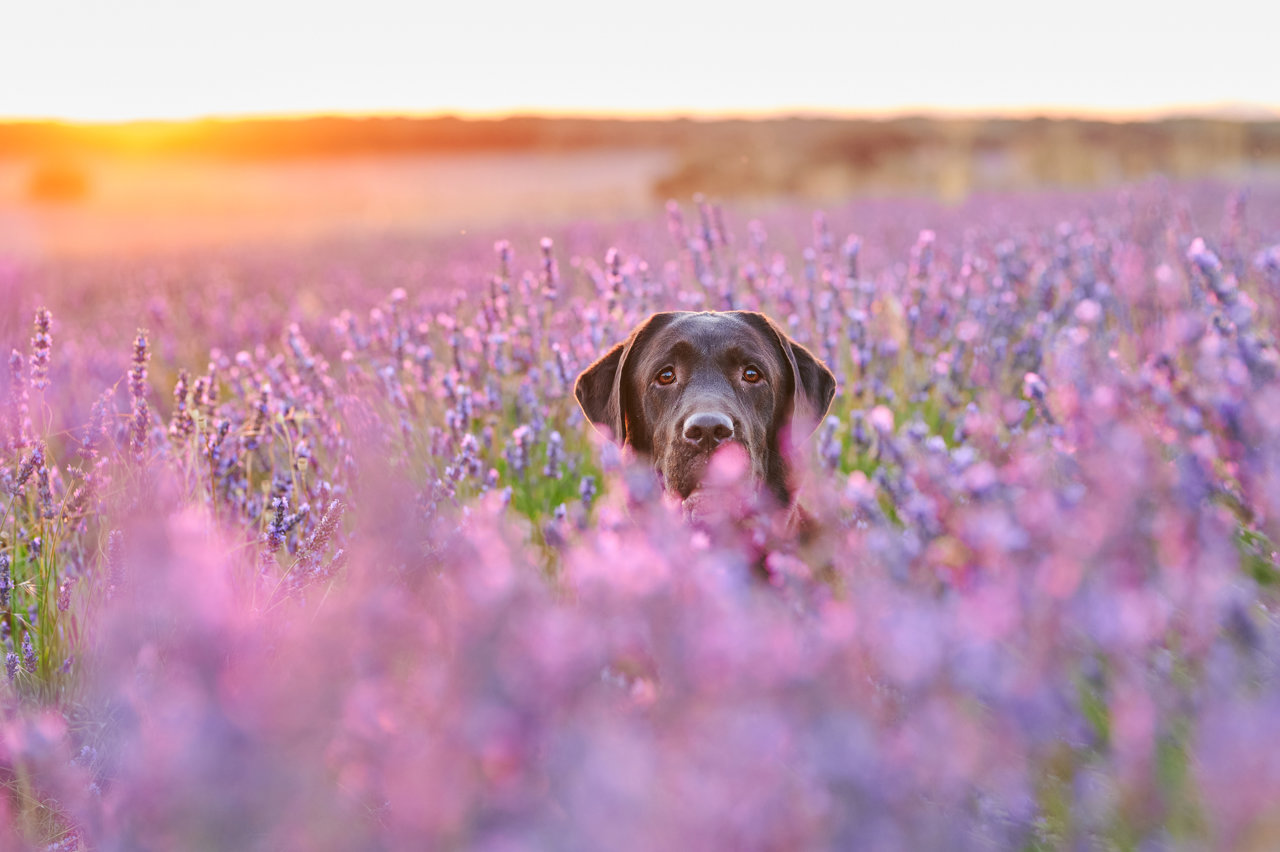
How do dogs see the world? It is no mystery that their vision is very different from ours, but its particularities are more difficult to detect if it is not through behavioral studies.
It has often been said that they do not see as well and that they basically depend on smell, but this is not entirely true: dogs see better than us in some ways and worse in others, simply because their vision has evolved to meet different needs.
The canid family are mostly hunting animals, so their vision has to meet a very specific need: easily identify their prey, often in the middle of a landscape and in highly variable light conditions. For this reason, their eyes have specialized in distinguishing moving things without paying so much importance to their color or sharpness.
A world with few colors
The most significant difference between our eyesight and that of dogs is that they distinguish fewer colors, since they only have two types of cones, the photoreceptor cells that are responsible for color perception, while humans have three. Each type of cone captures a certain wavelength, and the combination of them forms the spectrum of visible light for each species.
The cones that dogs have are specialized in wavelengths corresponding to blue and yellow, so that a color is more indistinguishable to them the further away it is from them: thus, those that are in the limits of these wavelengths, like orange or green, they see them as shades of yellow; while those that are further away, such as red or violet, are monochrome for them.
Dogs have fast-twitch muscles that allow them to adopt human-like expressions.
The effects of selective breeding
The second important difference between our eyesight and canine eyesight is visual acuity, that is, the ability to distinguish small differences with precision. In general, dogs have trouble distinguishing images at medium and long distances; its ratio on the Snellen scale, used to measure vision problems, is 20/75: this means that something that a person without vision problems can see clearly at 75 feet (about 23 meters), a dog needs to have it at 20 feet (about 6 meters) to see it just as clearly; hence the importance of smell in his life.
Their visual capacity also varies depending on the morphology of the skull: in particular, dogs with long snouts have better peripheral vision (up to 270º) than those with short snouts (around 180º, similar to that of humans). This is due to the different shape of their fovea, the area of ??the retina where light rays are focused: in canids it is elongated, giving them a greater field of vision.
Centuries of selective breeding have had contrary effects on different breeds. On the one hand, selection for flat-nosed dogs as pets has shortened the width of the fovea proportionally to the reduction of the muzzle. Instead, the breeding of dogs with better eyesight for hunting has meant that the long-snouted breeds, closer to their wild relatives in terms of skull shape, have kept their vision intact.
In contrast, flat-nosed dogs have gained an ability that has surely influenced their popularity as pets: a better ability to make eye contact and focus on what is in front of them. It is for this reason that these dogs tend to look directly at humans, while those with longer muzzles have a more or less marked tendency to look at them sideways or tilt their heads.
hunters view
Dogs are descended from hunting animals and this significantly influences two aspects: their ability to distinguish things in motion and to see in highly variable light conditions. This is due to its greater density of rods, another type of photoreceptor cells, responsible for capturing light.
As mentioned before, dogs have difficulty focusing correctly at medium and long distances, which means that they see the world through a certain myopia. However, they make up for this deficiency with an excellent ability to distinguish moving objects or beings. This is because their increased number of rods allows them to process images at a higher rate, so they can more easily detect changes in the position of a creature or object.
This is the reason why dogs prefer moving toys, and also why they seem to distinguish us more easily when we move, while if we stay still they do it too, trying to identify if it is us. It has been shown that a dog can identify its keepers from almost a kilometer away if they move, while this perception drops to almost half if they stay still.
Night vision
In dogs, the higher density of rods also allows them to see in more variable light conditions. While other mammals, such as humans and other primates, have primarily day vision and in low light conditions the pupil takes longer to adapt, dogs and other hunters see just as well during the day as they do at night.
In addition, dogs have two adaptations that further improve their night vision. For one thing, their pupil is very large in proportion to the total surface area of ??the eye, allowing much more light to enter. On the other, they have a structure called the tapetum lucidum that reflects light after it has passed through the retina, making it pass a second time, so that the retina receives it twice.
Although dogs have been accustomed to living with humans for millennia, the heritage of their ancestors continues to determine the way they see the world; why they love chasing balls, sticks and frisbees so much; or why short-snouted dogs seem to look at us with more attention. (National Geographic) (Photo: Istock)